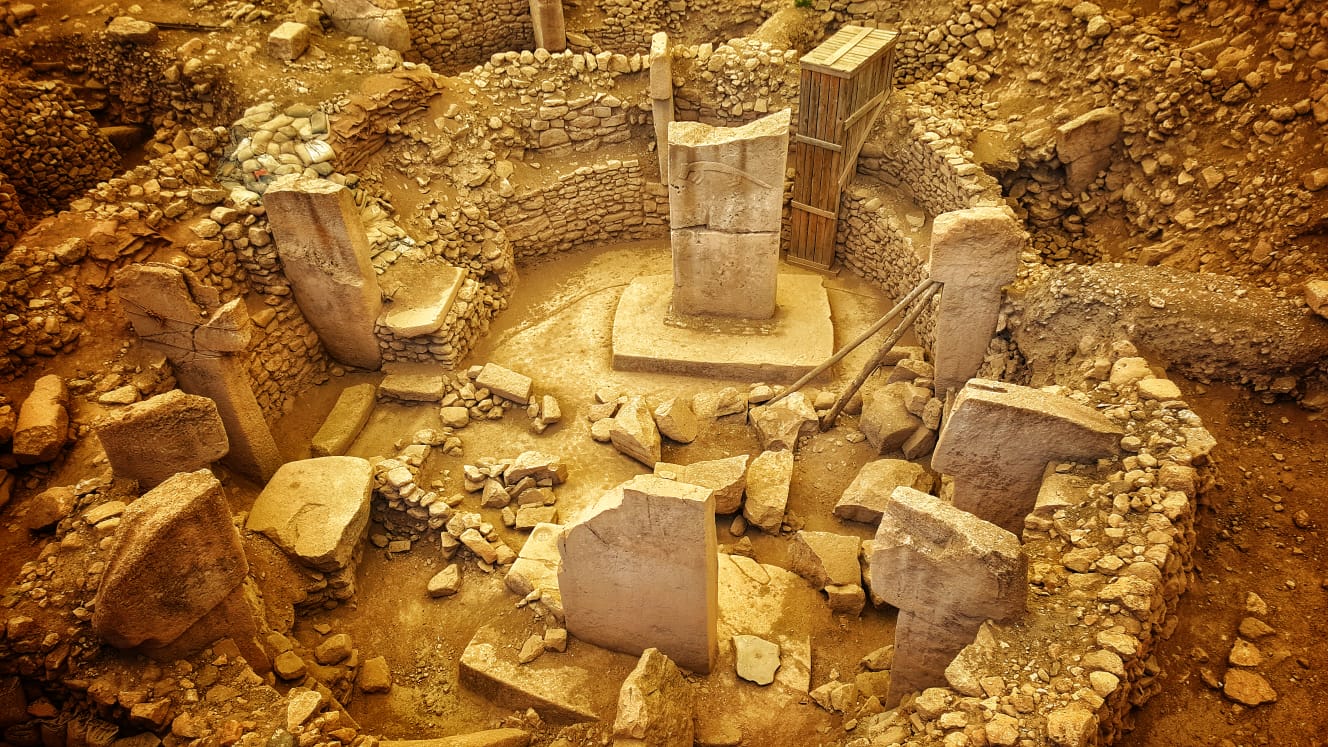Göbeklitepe
Table of Contents
Göbeklitepe of Turkey is a new discovery in archaeology!
Göbeklitepe of Turkey is a new discovery in archaeology! It can be likened to the Stonehenge. However Göbekli Tepe is 6500 years older than the Stonehenge. If the Stonehenge is one circle of megaliths, the Göbekli Tepe consists of more than 20 circles.
Klaus Schmidt (1953 – 2014), a German archaeologist and pre-historian had been excavating at Nevalı Çori, However, the site was dug until 1991 in the context of rescue excavations during the construction of the Atatürk Dam on the Euphrates. Later it submerged.
In 1994, Klaus was looking for another site to excavate. He reviewed the archaeological literature on the surrounding area, found some researchers’ description of Göbekli Tepe, and decided to look into the site. Having found similar structures at Nevalı Çori, he recognized the possibility that the rocks and slabs could be prehistoric. The next year, he started excavating Göbekli Tepe in collaboration with the Şanlıurfa Museum. Then he started earthing T-shaped rocks in unbelievable sizes. Thanks to the enormous size finds, he was able to draw notable attention from all over the world. Excavations continued until 2014, when Klaus passed away because of a heart attack.
The fact that this area is already filled with many other neolithic settlements is actually not a coincidence. It was in this area that wild ancestors of wheat, barley and lentils grew. Later, seeds should have been obtained from these wild plants within thousand years. Farming and domestication of animals were possible after this.
As excavations continued in Göbekli Tepe, it was understood that this was not a settlement place, thus no houses nor burials have been found here.
Pre-Pottery Neolithic A (dating to the 10th millennium BC) and smaller buildings identified as Pre-Pottery Neolithic B (dating from the 9th millennium BC) have both been unearthed.
What Klaus basically found here were T-shaped rock pillars in circles. The whole site has not been excavated yet, but from geophysical surveys, it is understood that there are totally more than 20 circles with probably more than 200 pillars forming the circles. Each pillar has a height of up to 6 m (20 ft) and weighs up to 20 tons. They are fitted into sockets that were hewn out of the bedrock. These can be accepted as the world’s oldest known megaliths. These stones were shaped thousands of years before the use of bronze or iron. They must have been quarried and shaped by harder pieces of rocks, like flint.
A similarity to the Stonehenge can be established here, but Göbekli Tepe is 6500 years older than the Stonehenge.
In the middle of each circle, there are two taller pillars facing each other. The pillars making the circle are shorter. There are many animal reliefs on stone pillars. Rather than mythological animals, these are simple everyday animals like bulls, boars, foxes, gazelles, donkeys, snakes, reptiles, insects, birds, vultures, ducks etc. This may lead us to think that people of Göbekli Tepe might be worshippers of nature like the Shamanistic people.
Some of the T-shaped pillars have human arms. The horizontal part on top of the T-shaped pillars can be thought like human heads.
Some floors are made of burnt lime, others are bedrock from which pedestals to hold the large pair of central pillars were carved in high relief.
Around the beginning of the 8th millennium BC Göbekli Tepe lost its importance. But the complex was not simply abandoned and forgotten to be gradually destroyed by the elements. Instead, each enclosure was deliberately buried under refuse consisting mainly of small limestone fragments, stone vessels, and stone tools. Many animal, even human, bones have also been identified in the fill. Why the enclosures were buried is unknown, they might have wanted to preserve the sacred.
Not only its large dimensions, but the side-by-side existence of multiple pillar circles makes the location unique. There are no comparable monumental complexes from its time. The more it was excavated, the more questions it raised, rather than answers to earlier questions.
This place is thought of more like a gathering and also a bartering place. The distinctive architecture in Göbekli Tepe allows us to think about public buildings. To call these buildings as temples is not that possible, as these enclosures cannot be regarded as places dedicated to gods and goddesses.
The T-shaped pillars might be monumental statues. One of the most important information that we can gather from Göbekli Tepe is that there should be division of labor, coordination and organization between groups of hunter-gatherer people of the Neolithic Age. Obviously they needed and invested in these gigantic size public buildings. This might have stimulated the Neolithic settled life afterwards.
Abundant amount of butchered meat and alcoholic residue found in a 160-liter capacity stone container imply festivities for the gatherings of people, either religious or social, or both.
The making of gigantic size stones definitely require hundreds of workers. This implies different groups of people rather than socially equal groups. As domestication of animals and seed were made possible, we see migrations from these areas in which people felt under pressure.
To visit Göbekli Tepe, you need to fly to Şanlıurfa and have at least an overnight there. Finds from the site are exhibited at the Şanlıurfa Archaeological Museum. Mosaic museum of the same complex, beehive houses of Harran, local cuisine of Şanlıurfa, sites of Abrahamic religions make this visit so much worthwhile.
Şerif Yenen, author of this article, organizes tours to Göbekli Tepe in addition to tours in Istanbul and all over Turkey.
More information is available at www.serifyenen.com




